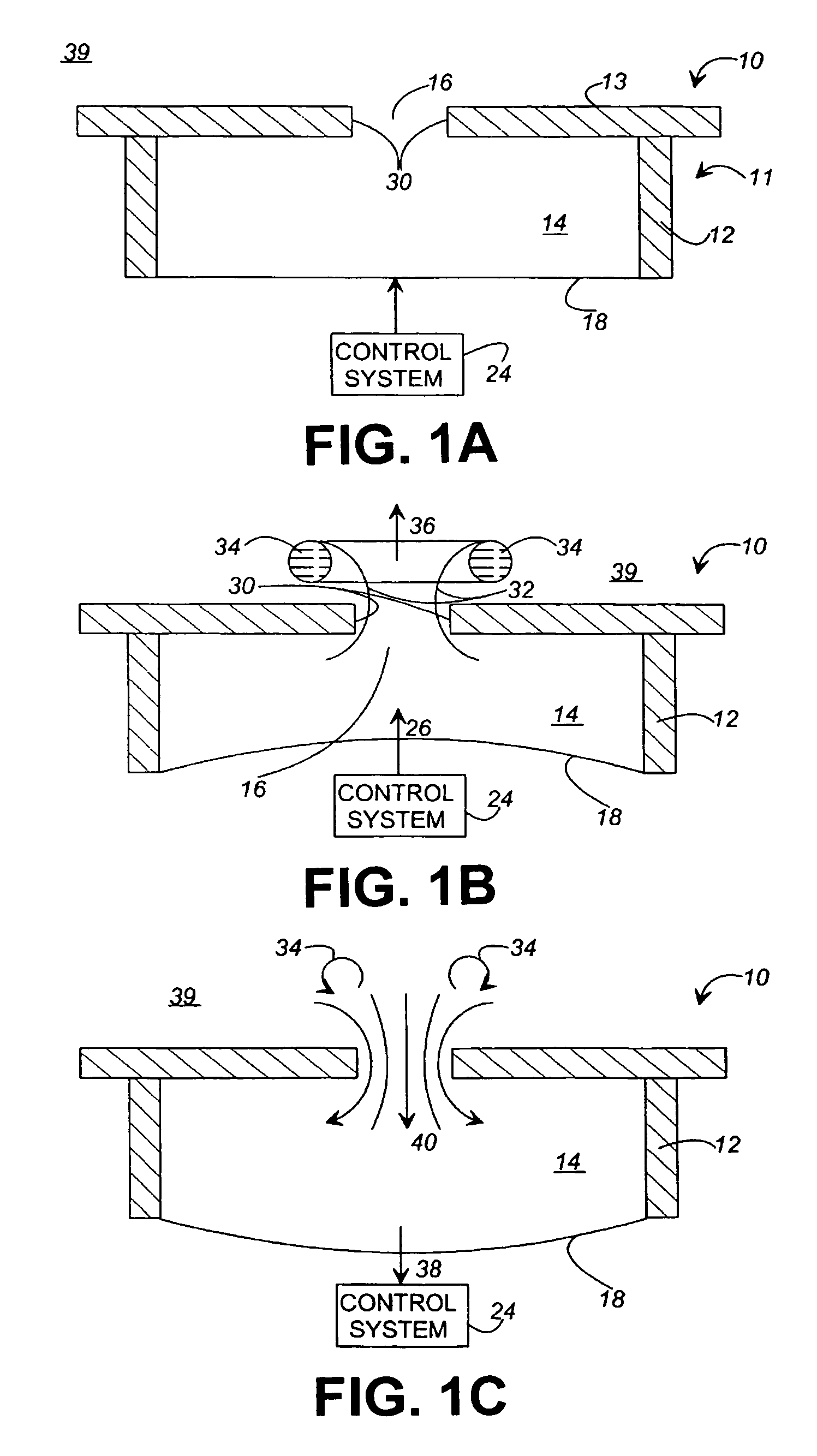Georgia Tech inventors have created a synthetic jet actuators positioned downstream of vorticity concentration-producing components, e.g., protrusions and/or depressions, for modification of fluid flow about various aerodynamic surfaces. Particularly, the present invention is concerned with modifying performance of solid bodies at low angles of attack wherein the baseline flow is fully attached. In this regard, the invention involves the modification of fluid flow about a body by altering the apparent aerodynamic shape of the body when the body is immersed in a fluid flow field.
- Substantial drag reduction
- Commercial aircraft- in cruise conditions
Recent studies have suggested that the use of synthetic jet actuators in aerodynamic surfaces at relatively low levels of actuation and high enough operating frequencies is very effective at post stall angles of attack of the baseline airfoil. This is because the actuation leads to alteration of the streamwise pressure gradient and therefore to the suppression of separation. However, at low angles of attack in the absence of stall, the induced aerodynamic changes require higher actuation levels (or higher Cμ) and therefore an increase in energy usage, and possibly size of the synthetic jet actuator. While this energy cost may be acceptable for short periods of time (e.g., during maneuvering), it would be desirable to have a method and device for altering the aerodynamic characteristics with synthetic jet actuators at low actuation levels for prolonged actuation periods such as flight in cruise conditions.

